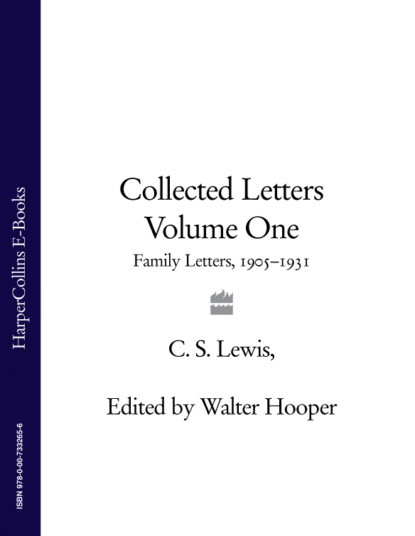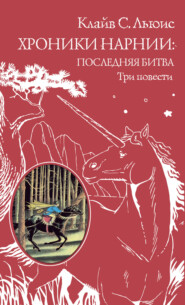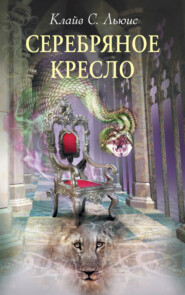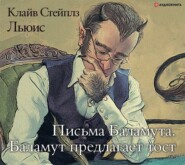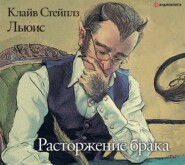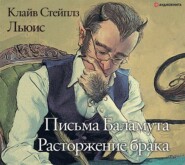По всем вопросам обращайтесь на: info@litportal.ru
(©) 2003-2024.
✖
Collected Letters Volume One: Family Letters 1905–1931
Настройки чтения
Размер шрифта
Высота строк
Поля
Collected Letters Volume One: Family Letters 1905–1931
Walter Hooper
C. S. Lewis
This collection brings together the best of C.S. Lewis’s letters – some published for the first time. Arranged in chronological order, this is the first volume covering Family Letters: 1905-1931.C.S. Lewis was a most prolific letter writer and his personal correspondence reveals much of his private life, reflections, friendships and feelings. This collection, carefully chosen and arranged by Walter Hooper, is the most extensive ever published.In this great and important collection are the letters Lewis wrote to J.R.R. Tolkien, Dorothy L. Sayers, Owen Barfield, Arthur C. Clarke, Sheldon Vanauken and Dom Bede Griffiths. To some particular friends, such as Dorothy L. Sayers, Lewis wrote over fifty letters alone. The letters deal with all of Lewis’s interests: theology, literary criticism, poetry, fantasy, children’s stories as well as revealing his relationships with family members and friends.This first volume of Family Letters: 1905-1931 covers Lewis’s boyhood and early manhood, his army years, undergraduate life at Oxford and his election to a fellowship at Magdalen College. Lewis became an atheist when he was 13 years old and his dislike of Christianity is evident in many of his letters. The volume concludes with a letter describing an evening spent with J.R.R. Tolkien and Hugo Dyson when he came to see that he was wrong to think of Christianity as one of ‘many myths.’ ‘What Dyson and Tolkien showed me was that… the story of Christ is simply a true myth… but with this tremendous difference that it really happened.’
THE COLLECTED LETTERS OF
C. S. LEWIS
VOLUME I
Family Letters 1905–1931
EDITED BY WALTER HOOPER
CONTENTS
Preface (#ue31cec2f-1d27-5f8a-93e3-556918463f4f)
Abbreviations (#u7a2af2d5-3362-5969-b8aa-880ebe5d1906)
Letters:
Chapter 1 - 1905-1910 (#uf81ccf6e-0cb5-5c7e-925c-b0ba09b5a610)
Chapter 2 - 1911-1912 (#u658438fb-5696-5522-a341-358f195c10e9)
Chapter 3 - 1913 (#u69b35700-9f85-5a7f-a762-19c500b4219d)
Chapter 4 - 1914 (#u91330080-24b1-5409-aa68-20cbc08cdc6f)
Chapter 5 - 1915 (#u969fe595-afd6-5f92-9370-b9b097c9aaf5)
Chapter 6 - 1916 (#ubda77342-0f0d-5193-93bc-99302bc1c900)
Chapter 7 - 1917 (#litres_trial_promo)
Chapter 8 - 1918 (#litres_trial_promo)
Chapter 9 - 1919 (#litres_trial_promo)
Chapter 10 - 1920 (#litres_trial_promo)
Chapter 11 - 1921 (#litres_trial_promo)
Chapter 12 - 1922 (#litres_trial_promo)
Chapter 13 - 1923 (#litres_trial_promo)
Chapter 14 - 1924 (#litres_trial_promo)
Chapter 15 - 1925 (#litres_trial_promo)
Chapter 16 - 1926 (#litres_trial_promo)
Chapter 17 - 1927 (#litres_trial_promo)
Chapter 18 - 1928 (#litres_trial_promo)
Chapter 19 - 1929 (#litres_trial_promo)
Chapter 20 - 1930 (#litres_trial_promo)
Chapter 21 - 1931 (#litres_trial_promo)
Biographical Appendix (#litres_trial_promo)
Index (#litres_trial_promo)
Books by C. S. Lewis (#litres_trial_promo)
Copyright (#litres_trial_promo)
About the Publisher (#litres_trial_promo)
PREFACE (#uc2941ee1-0da4-5daf-8557-41f4d35aa1b1)
‘A heavy responsibility rests on those who forage through a dead man’s correspondence and publish it indiscriminately.’ Thus C. S. Lewis wrote to his father, Albert Lewis, on 5 June 1926 about The Letters of Sir Walter Raleigh which both were reading. Sir Walter Raleigh (1861-1922), whom Lewis had known, was the first Professor of English at Oxford (1904).
‘The funny thing,’ Lewis went on to say, is that Raleigh’s ‘views on the things of the spirit…are not really in opposition to the atmosphere of Christianity. Whatever he thought about the historical side of it, he must have known…that the religious view, whether literally true or not, was at any rate much more like the reality than the views of the scientists and rationalists.’
It is surprising to find C. S. Lewis–the clearest of writers–attempting to create vagueness by his use of the phrases ‘not really’, ‘the religious view’ and ‘the historical side’. He was 28 and had been a Fellow of Magdalen College for nine months. But since he ceased to believe in Christianity at the age of 14, he had been hiding his atheism from his father. In trying to make Raleigh’s beliefs appear more orthodox than they were, ‘Jack’, as he was known to his friends, may have expressed the anxiety he felt about his father discovering his unbelief.
Only three years later, 1929, Albert Lewis died. Shortly before his father’s death Jack converted to theism, a change that did much to unite his private beliefs with his public face. Then two years after this came the step which did away with the need for subterfuge altogether. On 28 September 1931 Jack was taken to Whipsnade Zoo in his brother’s sidecar. ‘When we set out,’ he later said in Surprised by Joy, ‘I did not believe that Jesus Christ is the Son of God, and when we reached the zoo I did. Yet I had not exactly spent the journey in thought. Nor in great emotion. “Emotional” is perhaps the last word we can apply to some of the most important events. It was more like when a man, after long sleep, still lying motionless in bed, becomes aware that he is now awake.’
Family Letters is the first of what is to be a three-volume collection of C. S. Lewis’s letters. It covers the period November 1905 to 18 October 1931, from the first letter we have of Lewis’s, written when he was seven, up to his acceptance of Christianity as true. To prevent the book from being too long it was necessary to leave out a few letters, but the volume contains about 95 per cent of the letters from that period. Many of the letters I have omitted were weekly ‘regulation’ letters from Jack to his father from his various schools. I have also left out certain letters to Owen Barfield and Cecil Harwood. In these Lewis was primarily arguing philosophical points or criticizing his correspondents’ poetry. It was thought these letters would be of comparatively marginal interest to most people or of relatively small significance in the larger story.
When Albert Lewis died, Jack and his brother Warren, or ‘Warnie’, found their father had preserved masses of family papers going back to 1850. The papers were moved to Oxford, and Warnie spent much of 1933 to 1935 copying them. He undertook this enormous task using the hunt-and-peck system on his little Royal typewriter. Both brothers added valuable editorial notes along the way, and the papers were bound into 11 volumes entitled ‘Memoirs of the Lewis Family: 1850-1930’, now widely referred to as the ‘Lewis Papers’. The original of the Lewis Papers is in the Marion E. Wade Center at Wheaton College in Illinois, with microfilms in the Bodleian Library, Oxford, and the Southern Historical Collection at the University of North Carolina at Chapel Hill. Any dubious spelling or dating in the Lewis Papers is impossible to check against the original manuscripts. When Roger Lancelyn Green and I borrowed the Lewis Papers for help in writing C. S. Lewis: A Biography, Warnie urged us (letter of 1 April 1967) to ‘take the greatest care of them–for there is only this one copy in existence, and the originals from which all material was drawn were burnt by Jack in 1936’. It is unlikely that Lewis would have thought publishing letters from this collection an ‘indiscriminate’ use because he helped to assemble them.
The Lewis Papers came into use when Warnie wished to commemorate his brother after Jack’s death in 1963. ‘I intend to see what sort of a hand I make at a “Life and Letters” of dear Jack,’ he wrote to me on 8 February 1964. ‘Not exactly a L. & L. in the usual sense, for of course I shall not use anything he has himself told us in Surprised by Joy. It will be more what the French 17th Cent. writers used to call Mémoires pour servir etc.’ That book eventually became Letters of C. S. Lewis, edited, with a Memoir by W. H. Lewis (1964). However, because Warnie originally set out to write a biography, not edit a volume of letters, he restricted his brother’s letters to what are, in effect, quotations. None of the family letters quoted in Letters of C. S. Lewis is complete. I hope those who enjoyed reading fragments of Lewis’s letters to his father and brother in the 1966 Letters and the Enlarged Edition of 1988 will be pleased to find them here in their entirety.
While the volume includes letters to Owen Barfield and other friends he met at Oxford, most were written to Albert Lewis, Warnie and his boyhood friend Arthur Greeves. Some of the best of those he wrote to Warnie arose out of Warnie’s long stay in South Africa with the Army Service Corps. He knew Warnie would be lonely so far away and that he found letters companionable. ‘As we talk a good deal of odd fragments out of books when we are together,’ Jack wrote to him in March 1921, ‘there’s no reason why we should not reproduce the same sort of tittle-tattle. Perhaps one of the reasons why letters are so hard to write and so much harder to read is that people confine themselves to news–in other words think nothing worth writing except that which would not be worth saying.’
The letters to his father are by no means all news, but they differ from the ones to Warnie and Arthur in being more or less obligatory reports from his various schools. There are times when news is very interesting too, and on occasions we find Jack begging his father for precisely that, news. One of the turning points in this volume comes soon after 1925 when his ideas are the news. Jack, now a don at Magdalen College, writes to his father as an independent young man and we see that seminal work of literary history, The Allegory of Love, taking shape before our eyes.
Jack Lewis was later to regret that he was so cavalier about dating his early correspondence, and my guess is that it was Albert Lewis who preserved the postmarks of many of his son’s letters. This helped Warnie when arranging them in the Lewis Papers. Sometimes he did not even have a postmark to guide him, and in some instances where he failed I had the advantage of comparing the family letters to those written to Arthur Greeves, and vice versa. In one of the many undated letters to his father (2? April 1919), Jack said, ‘Did you see the “very insolent” review of me on the back page of the Times Literary Supplement last week?’ I found the review in The Times Literary Supplement of 27 March 1919, and we are able to see almost exactly where the letter fits.
The letters to Arthur Greeves were published in 1979 as They Stand Together: The Letters of C. S. Lewis to Arthur Greeves (1914-1963), a book which has been out of print many years. The originals of all the Greeves letters in Family Letters are in Wheaton College, with copies in the Bodleian. Jack described Arthur as his ‘First Friend’. ‘I had been so far from thinking such a friend possible,’ he said of him in Surprised by Joy, ‘that I had never even longed for one; no more than I longed to be King of England.’ The letters to Arthur are exactly the balance needed for those Jack wrote to his father, not merely because they were young men of the same age with similar interests, but because Arthur was his confidant. The only clear statement we have about Lewis’s religious beliefs as a teenager was made to Arthur in October 1916. All religions, that is, all mythologies to give them their proper name,’ he wrote on 12 October 1916, ‘are merely man’s own invention.’ And when, following the death of his father, he began to look at Christianity, and himself, in a new light, he confided in Arthur. ‘You are my only real Father Confessor’, he said.
Walter Hooper
C. S. Lewis
This collection brings together the best of C.S. Lewis’s letters – some published for the first time. Arranged in chronological order, this is the first volume covering Family Letters: 1905-1931.C.S. Lewis was a most prolific letter writer and his personal correspondence reveals much of his private life, reflections, friendships and feelings. This collection, carefully chosen and arranged by Walter Hooper, is the most extensive ever published.In this great and important collection are the letters Lewis wrote to J.R.R. Tolkien, Dorothy L. Sayers, Owen Barfield, Arthur C. Clarke, Sheldon Vanauken and Dom Bede Griffiths. To some particular friends, such as Dorothy L. Sayers, Lewis wrote over fifty letters alone. The letters deal with all of Lewis’s interests: theology, literary criticism, poetry, fantasy, children’s stories as well as revealing his relationships with family members and friends.This first volume of Family Letters: 1905-1931 covers Lewis’s boyhood and early manhood, his army years, undergraduate life at Oxford and his election to a fellowship at Magdalen College. Lewis became an atheist when he was 13 years old and his dislike of Christianity is evident in many of his letters. The volume concludes with a letter describing an evening spent with J.R.R. Tolkien and Hugo Dyson when he came to see that he was wrong to think of Christianity as one of ‘many myths.’ ‘What Dyson and Tolkien showed me was that… the story of Christ is simply a true myth… but with this tremendous difference that it really happened.’
THE COLLECTED LETTERS OF
C. S. LEWIS
VOLUME I
Family Letters 1905–1931
EDITED BY WALTER HOOPER
CONTENTS
Preface (#ue31cec2f-1d27-5f8a-93e3-556918463f4f)
Abbreviations (#u7a2af2d5-3362-5969-b8aa-880ebe5d1906)
Letters:
Chapter 1 - 1905-1910 (#uf81ccf6e-0cb5-5c7e-925c-b0ba09b5a610)
Chapter 2 - 1911-1912 (#u658438fb-5696-5522-a341-358f195c10e9)
Chapter 3 - 1913 (#u69b35700-9f85-5a7f-a762-19c500b4219d)
Chapter 4 - 1914 (#u91330080-24b1-5409-aa68-20cbc08cdc6f)
Chapter 5 - 1915 (#u969fe595-afd6-5f92-9370-b9b097c9aaf5)
Chapter 6 - 1916 (#ubda77342-0f0d-5193-93bc-99302bc1c900)
Chapter 7 - 1917 (#litres_trial_promo)
Chapter 8 - 1918 (#litres_trial_promo)
Chapter 9 - 1919 (#litres_trial_promo)
Chapter 10 - 1920 (#litres_trial_promo)
Chapter 11 - 1921 (#litres_trial_promo)
Chapter 12 - 1922 (#litres_trial_promo)
Chapter 13 - 1923 (#litres_trial_promo)
Chapter 14 - 1924 (#litres_trial_promo)
Chapter 15 - 1925 (#litres_trial_promo)
Chapter 16 - 1926 (#litres_trial_promo)
Chapter 17 - 1927 (#litres_trial_promo)
Chapter 18 - 1928 (#litres_trial_promo)
Chapter 19 - 1929 (#litres_trial_promo)
Chapter 20 - 1930 (#litres_trial_promo)
Chapter 21 - 1931 (#litres_trial_promo)
Biographical Appendix (#litres_trial_promo)
Index (#litres_trial_promo)
Books by C. S. Lewis (#litres_trial_promo)
Copyright (#litres_trial_promo)
About the Publisher (#litres_trial_promo)
PREFACE (#uc2941ee1-0da4-5daf-8557-41f4d35aa1b1)
‘A heavy responsibility rests on those who forage through a dead man’s correspondence and publish it indiscriminately.’ Thus C. S. Lewis wrote to his father, Albert Lewis, on 5 June 1926 about The Letters of Sir Walter Raleigh which both were reading. Sir Walter Raleigh (1861-1922), whom Lewis had known, was the first Professor of English at Oxford (1904).
‘The funny thing,’ Lewis went on to say, is that Raleigh’s ‘views on the things of the spirit…are not really in opposition to the atmosphere of Christianity. Whatever he thought about the historical side of it, he must have known…that the religious view, whether literally true or not, was at any rate much more like the reality than the views of the scientists and rationalists.’
It is surprising to find C. S. Lewis–the clearest of writers–attempting to create vagueness by his use of the phrases ‘not really’, ‘the religious view’ and ‘the historical side’. He was 28 and had been a Fellow of Magdalen College for nine months. But since he ceased to believe in Christianity at the age of 14, he had been hiding his atheism from his father. In trying to make Raleigh’s beliefs appear more orthodox than they were, ‘Jack’, as he was known to his friends, may have expressed the anxiety he felt about his father discovering his unbelief.
Only three years later, 1929, Albert Lewis died. Shortly before his father’s death Jack converted to theism, a change that did much to unite his private beliefs with his public face. Then two years after this came the step which did away with the need for subterfuge altogether. On 28 September 1931 Jack was taken to Whipsnade Zoo in his brother’s sidecar. ‘When we set out,’ he later said in Surprised by Joy, ‘I did not believe that Jesus Christ is the Son of God, and when we reached the zoo I did. Yet I had not exactly spent the journey in thought. Nor in great emotion. “Emotional” is perhaps the last word we can apply to some of the most important events. It was more like when a man, after long sleep, still lying motionless in bed, becomes aware that he is now awake.’
Family Letters is the first of what is to be a three-volume collection of C. S. Lewis’s letters. It covers the period November 1905 to 18 October 1931, from the first letter we have of Lewis’s, written when he was seven, up to his acceptance of Christianity as true. To prevent the book from being too long it was necessary to leave out a few letters, but the volume contains about 95 per cent of the letters from that period. Many of the letters I have omitted were weekly ‘regulation’ letters from Jack to his father from his various schools. I have also left out certain letters to Owen Barfield and Cecil Harwood. In these Lewis was primarily arguing philosophical points or criticizing his correspondents’ poetry. It was thought these letters would be of comparatively marginal interest to most people or of relatively small significance in the larger story.
When Albert Lewis died, Jack and his brother Warren, or ‘Warnie’, found their father had preserved masses of family papers going back to 1850. The papers were moved to Oxford, and Warnie spent much of 1933 to 1935 copying them. He undertook this enormous task using the hunt-and-peck system on his little Royal typewriter. Both brothers added valuable editorial notes along the way, and the papers were bound into 11 volumes entitled ‘Memoirs of the Lewis Family: 1850-1930’, now widely referred to as the ‘Lewis Papers’. The original of the Lewis Papers is in the Marion E. Wade Center at Wheaton College in Illinois, with microfilms in the Bodleian Library, Oxford, and the Southern Historical Collection at the University of North Carolina at Chapel Hill. Any dubious spelling or dating in the Lewis Papers is impossible to check against the original manuscripts. When Roger Lancelyn Green and I borrowed the Lewis Papers for help in writing C. S. Lewis: A Biography, Warnie urged us (letter of 1 April 1967) to ‘take the greatest care of them–for there is only this one copy in existence, and the originals from which all material was drawn were burnt by Jack in 1936’. It is unlikely that Lewis would have thought publishing letters from this collection an ‘indiscriminate’ use because he helped to assemble them.
The Lewis Papers came into use when Warnie wished to commemorate his brother after Jack’s death in 1963. ‘I intend to see what sort of a hand I make at a “Life and Letters” of dear Jack,’ he wrote to me on 8 February 1964. ‘Not exactly a L. & L. in the usual sense, for of course I shall not use anything he has himself told us in Surprised by Joy. It will be more what the French 17th Cent. writers used to call Mémoires pour servir etc.’ That book eventually became Letters of C. S. Lewis, edited, with a Memoir by W. H. Lewis (1964). However, because Warnie originally set out to write a biography, not edit a volume of letters, he restricted his brother’s letters to what are, in effect, quotations. None of the family letters quoted in Letters of C. S. Lewis is complete. I hope those who enjoyed reading fragments of Lewis’s letters to his father and brother in the 1966 Letters and the Enlarged Edition of 1988 will be pleased to find them here in their entirety.
While the volume includes letters to Owen Barfield and other friends he met at Oxford, most were written to Albert Lewis, Warnie and his boyhood friend Arthur Greeves. Some of the best of those he wrote to Warnie arose out of Warnie’s long stay in South Africa with the Army Service Corps. He knew Warnie would be lonely so far away and that he found letters companionable. ‘As we talk a good deal of odd fragments out of books when we are together,’ Jack wrote to him in March 1921, ‘there’s no reason why we should not reproduce the same sort of tittle-tattle. Perhaps one of the reasons why letters are so hard to write and so much harder to read is that people confine themselves to news–in other words think nothing worth writing except that which would not be worth saying.’
The letters to his father are by no means all news, but they differ from the ones to Warnie and Arthur in being more or less obligatory reports from his various schools. There are times when news is very interesting too, and on occasions we find Jack begging his father for precisely that, news. One of the turning points in this volume comes soon after 1925 when his ideas are the news. Jack, now a don at Magdalen College, writes to his father as an independent young man and we see that seminal work of literary history, The Allegory of Love, taking shape before our eyes.
Jack Lewis was later to regret that he was so cavalier about dating his early correspondence, and my guess is that it was Albert Lewis who preserved the postmarks of many of his son’s letters. This helped Warnie when arranging them in the Lewis Papers. Sometimes he did not even have a postmark to guide him, and in some instances where he failed I had the advantage of comparing the family letters to those written to Arthur Greeves, and vice versa. In one of the many undated letters to his father (2? April 1919), Jack said, ‘Did you see the “very insolent” review of me on the back page of the Times Literary Supplement last week?’ I found the review in The Times Literary Supplement of 27 March 1919, and we are able to see almost exactly where the letter fits.
The letters to Arthur Greeves were published in 1979 as They Stand Together: The Letters of C. S. Lewis to Arthur Greeves (1914-1963), a book which has been out of print many years. The originals of all the Greeves letters in Family Letters are in Wheaton College, with copies in the Bodleian. Jack described Arthur as his ‘First Friend’. ‘I had been so far from thinking such a friend possible,’ he said of him in Surprised by Joy, ‘that I had never even longed for one; no more than I longed to be King of England.’ The letters to Arthur are exactly the balance needed for those Jack wrote to his father, not merely because they were young men of the same age with similar interests, but because Arthur was his confidant. The only clear statement we have about Lewis’s religious beliefs as a teenager was made to Arthur in October 1916. All religions, that is, all mythologies to give them their proper name,’ he wrote on 12 October 1916, ‘are merely man’s own invention.’ And when, following the death of his father, he began to look at Christianity, and himself, in a new light, he confided in Arthur. ‘You are my only real Father Confessor’, he said.





